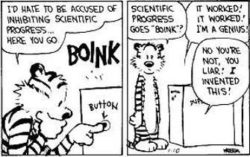 As an immunocompromised person, I thought that this was interesting: The standard line is that under 3% of the U.S. population is immunocompromised either due to disease, to antirejection drugs associated with transplants, or to (frequently cancer) medical treatment. But Melissa L. Martinson, Jessica Lapham, Prevalence of Immunosuppression Among US Adults (Feb. 15, 2024) suggests that the real number today — due to more immunosuppresive medical treatments? — actually may be over 6.6%:
As an immunocompromised person, I thought that this was interesting: The standard line is that under 3% of the U.S. population is immunocompromised either due to disease, to antirejection drugs associated with transplants, or to (frequently cancer) medical treatment. But Melissa L. Martinson, Jessica Lapham, Prevalence of Immunosuppression Among US Adults (Feb. 15, 2024) suggests that the real number today — due to more immunosuppresive medical treatments? — actually may be over 6.6%:
Of the 29 164 (unweighted) eligible adults, 6.6% (95% CI, 6.2%-6.9%) (weighted) had current immunosuppression based on their reported health conditions, prescriptions, and medical treatments. The weighted prevalence was 4.4% for having an immunosuppressive condition, 3.9% for taking an immunosuppressive medication, and 1.8% for both; the weighted prevalence of having hematological cancer was 0.1%. These categories were not mutually exclusive.
[…]
[U]sing the 2021 NHIS, an estimated 6.6% of US adults had immunosuppression. This rate of immunosuppression was higher than the previous national estimate of 2.7% using the 2013 NHIS,1 yet the patterns in the distribution of immunosuppression by sex, race, and age were similar
It’s still a small minority, but it seems it’s a lot bigger than we thought.



 According to Nature,
According to Nature, 
 Rare it is that I find myself almost 100% onboard for an article at Reason.com, even if it is one of the relatively few right-wing sites I think is worth my time. But Elizabeth Nolan Brown, Reason.com,
Rare it is that I find myself almost 100% onboard for an article at Reason.com, even if it is one of the relatively few right-wing sites I think is worth my time. But Elizabeth Nolan Brown, Reason.com,